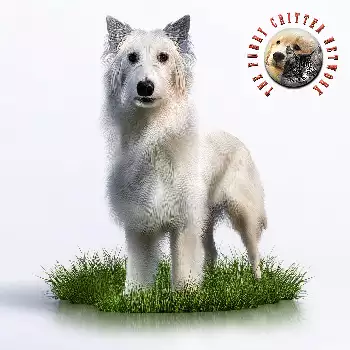The health profile of the Íslenskur fjárhundur reflects both the benefits of natural selection in harsh environmental conditions and the challenges associated with a relatively small gene pool that survived near-extinction events. This breed generally demonstrates robust constitution and longevity, with most individuals living healthy, active lives well into their teens. However, responsible ownership requires understanding specific health considerations and participating in recommended health testing protocols to ensure the continued viability and well-being of future generations.
Life expectancy for the Íslenskur fjárhundur typically ranges from 12 to 14 years, which compares favorably to many breeds of similar size and reflects their hardy constitution. Individual longevity depends on multiple factors including genetic heritage, environmental conditions, nutrition quality, exercise levels, and preventive veterinary care. Dogs from health-tested breeding stock with appropriate lifestyle management often exceed average lifespan expectations, while those from untested lines or subjected to poor care may experience shortened lifespans due to preventable conditions.
Orthopedic health represents the primary area of concern for Íslenskur fjárhundur breeders and owners, reflecting the breed's working heritage and the importance of sound movement for their traditional functions. Hip dysplasia, a developmental condition affecting the formation and function of the hip joint, occurs in the breed with varying degrees of severity. While generally less common than in larger working breeds, hip dysplasia can significantly impact mobility and quality of life when present. Responsible breeding practices require hip evaluation through radiographic examination, with only dogs receiving acceptable ratings being used for breeding.
Elbow dysplasia represents another orthopedic concern that can affect the breed's working ability and comfort levels. This developmental condition involves malformation of the elbow joint components, potentially leading to arthritis, lameness, and chronic pain if untreated. Early detection through veterinary examination and appropriate imaging enables management strategies that can preserve mobility and comfort throughout the dog's life. Breeding programs increasingly include elbow evaluation as part of comprehensive health screening protocols.
Common Health Issues
- Hip dysplasia - developmental condition affecting hip joint formation, requiring radiographic screening of breeding animals
- Progressive retinal atrophy (PRA) - inherited eye disorder causing gradual vision loss, preventable through genetic testing
- Luxating patella - kneecap dislocation causing intermittent lameness, ranging from mild to severely debilitating
Eye health concerns include several hereditary conditions that can significantly impact the breed's quality of life and working ability. Progressive retinal atrophy (PRA) represents the most serious concern, as this inherited condition causes progressive deterioration of retinal tissue, ultimately resulting in complete blindness. While affected dogs can adapt successfully to vision loss, early detection through genetic testing enables informed breeding decisions and allows owners to prepare appropriate management strategies before vision problems develop.
Cataracts, while less predictable than PRA, can develop in some Íslenskur fjárhundur and cause varying degrees of vision impairment. Age-related cataracts are a normal consequence of aging, while early-onset cataracts may indicate genetic predisposition. Regular ophthalmologic examinations enable early detection and monitoring of cataract development, allowing for timely intervention when surgical treatment is appropriate and feasible.
Cardiovascular health generally remains excellent in the breed, though occasional cases of heart conditions have been reported. Regular veterinary examinations should include cardiovascular assessment, particularly as dogs age or if any symptoms such as exercise intolerance, coughing, or breathing difficulties develop. Early detection of heart conditions enables management strategies that can maintain quality of life and extend healthy lifespan significantly.
Recommended Health Testing
- Hip dysplasia evaluation through OFA, PennHIP, or equivalent national schemes for breeding animals
- Progressive retinal atrophy (PRA) genetic testing through certified laboratories for all breeding stock
- Annual ophthalmologic examination by certified veterinary ophthalmologists throughout the dog's life
Skin and coat health generally remains excellent in the breed, though their double coat requires attention during seasonal changes when increased shedding can lead to matting or skin irritation without proper grooming. Their weatherproof coat naturally resists many environmental challenges, but regular brushing and inspection help prevent problems and maintain optimal skin condition. Allergic reactions are relatively uncommon but can occur, requiring veterinary assessment and management when symptoms develop.
Nutritional requirements for the Íslenskur fjárhundur emphasize high-quality protein sources appropriate for their activity level, with careful attention to maintaining optimal body condition throughout their lives. Their working heritage typically results in good appetites and efficient metabolism, but modern sedentary lifestyles can lead to weight gain that stresses joints and cardiovascular systems. Regular body condition assessment and dietary adjustment help maintain ideal weight and support long-term health.
Exercise-related health considerations include the importance of proper conditioning before intensive activities and awareness of environmental conditions during exercise sessions. While the breed tolerates cold weather exceptionally well, their dense coat can cause overheating in warm climates or during excessive exercise in hot conditions. Providing adequate hydration, shade, and rest periods helps prevent heat-related health problems and ensures safe exercise year-round.
Mental health aspects of comprehensive wellness include addressing the breed's needs for intellectual stimulation and meaningful activity. Íslenskur fjárhundur deprived of adequate mental exercise may develop behavioral problems that impact their overall well-being, including anxiety, depression, or compulsive behaviors. Providing appropriate outlets for their intelligence and working instincts contributes significantly to their psychological health and overall quality of life, supporting both longevity and happiness throughout their lives.

